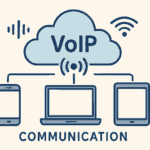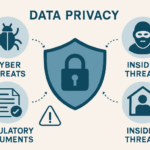Air Conditioners
Air conditioners are among the most significant electricity consumers of all household items. In regions with hot climates, air conditioning units often run for extended periods, drastically increasing electricity bills. Understanding what uses electricity within these systems can help homeowners optimize their operation. Central air conditioning systems circulate cool air throughout the home via a network of ducts, while window units cool individual rooms. Performing routine maintenance tasks like cleaning or changing filters, sealing ducts, and utilizing programmable thermostats can greatly enhance efficiency and decrease energy consumption. Shading external units and keeping windows covered during peak sunlight can also enhance efficiency. Homeowners might also consider using fans to circulate air, making rooms feel cooler without relying solely on air conditioning.
Water Heaters
Water heaters are another significant source of electricity consumption in the home. Electric water heaters work by heating water and maintaining it at a set temperature, ready for use at any time. This can lead to continuous energy drainage, particularly for older or less efficient models. On-demand tankless water heaters, which heat water only when needed, are a more energy-efficient option, as they eliminate standby heat loss. Additionally, lowering the thermostat setting on your water heater and regularly flushing the tank to remove sediment build-up can enhance efficiency. Insulating the water heater and the first few feet of associated piping can reduce energy consumption. Employing low-flow showerheads and faucet aerators helps decrease hot water usage, minimizes the workload on the water heater, and leads to further savings on electricity bills.
Refrigerators
Refrigerators are essential in every household, and they are also among the largest electricity consumers. They run continuously to keep food fresh, making energy efficiency crucial for lowering electricity bills. Modern refrigerators are much more efficient than older models. Basic tasks like maintaining clean coils, checking door seals, and following recommended internal temperature settings can lower energy consumption. Additionally, keeping the refrigerator and freezer compartments properly stocked allows for efficient cooling, as less air comes in when the doors are opened. Placing the refrigerator away from heat sources like ovens and direct sunlight keeps it from working harder to maintain cool temperatures.
Washing Machines
Washing machines, especially ones that are not energy-efficient, can consume a significant amount of electricity, particularly when washing clothes with hot water. Opting for cold-water washes when possible and using high-efficiency machines can significantly reduce energy use. Front-loading washers typically consume lesser amounts of water and electricity in comparison to top-loading machines. Additionally, ensuring that each load is full maximizes efficiency and decreases the number of washes required. Certain high-end models feature sensors that automatically adjust the water level according to the size of the load, resulting in increased energy efficiency. Washing clothes during off-peak energy times and air-drying them instead of using an electric dryer can also lead to notable electricity savings.
Lighting
Lighting is often overlooked but significant for consumers of household electricity. Traditional incandescent bulbs are less energy-efficient than compact fluorescent lamps (CFLs) and light-emitting diodes (LEDs). Switching to CFLs or LEDs can reduce electricity usage by up to 75%. Moreover, incorporating natural light during the daytime by opening blinds and curtains can lessen reliance on artificial lighting. Motion sensors and dimmer switches also help reduce electricity usage by ensuring lights are only used when needed. Installing intelligent lighting systems that allow for remote control and scheduling can further enhance energy efficiency, ensuring lights are off when not required. Replacing outdoor lighting with solar-powered options is another excellent way to save on electricity usage.
Electronics
Household electronics such as televisions, computers, and gaming consoles are another major category of electricity consumption. These devices often consume electricity even when turned off, known as phantom or standby power usage. Unplugging electronics or using smart power strips that cut off electricity when devices are not in use can help reduce this hidden energy consumption. Moreover, opting for energy-efficient models, adjusting settings such as screen brightness, and enabling power-saving modes can reduce electricity usage. For instance, turning off the monitor when not using the computer can save energy, as can setting computers to sleep mode after a period of inactivity. Streaming devices and cable boxes should also be unplugged or put on timers to avoid continuous power drain when not in use.
Kitchen Appliances
Kitchen appliances like ovens, microwaves, and dishwashers contribute to household electricity consumption. Microwaves use significantly less energy than ovens and are a more efficient option for reheating or cooking smaller meals. Dishwashers consume electricity mainly for heating water, so running full loads and using eco-settings can minimize energy use. Additionally, properly maintaining these appliances ensures that they operate at maximum efficiency. For example, regularly cleaning the dishwasher filter and avoiding pre-rinsing dishes can enhance performance. Convection ovens, which cook food faster and at lower temperatures than conventional ovens, can also reduce electricity consumption. Toaster ovens are another energy-saving alternative for smaller meals, offering quicker cooking times and less energy usage.
Energy-Saving Tips
Understanding what uses electricity in your home is the first step toward reducing energy consumption. Implementing energy-saving measures can significantly lower electricity bills and reduce your environmental footprint. Here are some additional tips for conserving energy in your household:
- Ceiling fans should be used to circulate air and reduce the need for air conditioning during warm months.
- Turn off and unplug chargers and electronics when they are not in use to avoid phantom energy consumption.
- Install programmable thermostats to automatically adjust home temperatures based on occupancy and time of day.
- Insulate your home to maintain a consistent temperature and reduce the demand for your heating and cooling systems.
- Conduct an energy audit to identify areas of improvement and targeted upgrades that can enhance energy efficiency.
- Install low-flow fixtures to reduce hot water usage and the energy required to heat water.
- Opt for energy-efficient appliances and devices throughout your home, from refrigerators to home entertainment systems.
- Implement routine maintenance on major appliances to ensure they operate at their most efficient levels.
- Deploy smart home technologies to automate and optimize energy usage, providing remote control and scheduling capabilities.
By implementing these practices and being mindful of your household’s electric consumption, you can make significant strides toward a more energy-efficient home. Adopting energy-saving habits, investing in efficient appliances, and utilizing innovative technology ensures sustainability and cost savings in the long run.

 Sara Saffari Height: Exact CM/Feet, Real‑World Perception, and Comparisons
Sara Saffari Height: Exact CM/Feet, Real‑World Perception, and Comparisons  What to Do When Your New Car Has Issues
What to Do When Your New Car Has Issues  Top Reasons Companies Are Outsourcing Their Customer Support in 2025
Top Reasons Companies Are Outsourcing Their Customer Support in 2025  Future Trends in Voice Over IP
Future Trends in Voice Over IP  TV Off Lyrics Meaning: Themes, Context, and Why It Resonates
TV Off Lyrics Meaning: Themes, Context, and Why It Resonates  Leanne Morgan Net Worth: 2025 Earnings, Income Streams, and Career Milestones
Leanne Morgan Net Worth: 2025 Earnings, Income Streams, and Career Milestones  Why Sexual Harassment Training Is Essential for a Respectful Workplace
Why Sexual Harassment Training Is Essential for a Respectful Workplace  Data Privacy Threats and How to Tackle Them
Data Privacy Threats and How to Tackle Them  The Role of Business Insurance in Financial Planning
The Role of Business Insurance in Financial Planning 